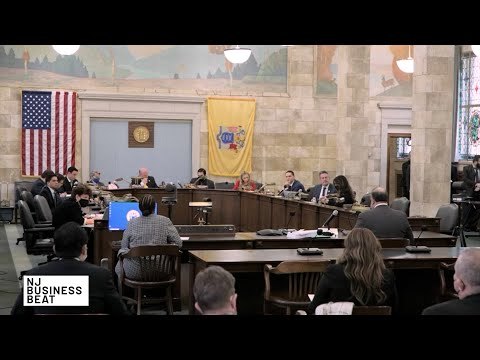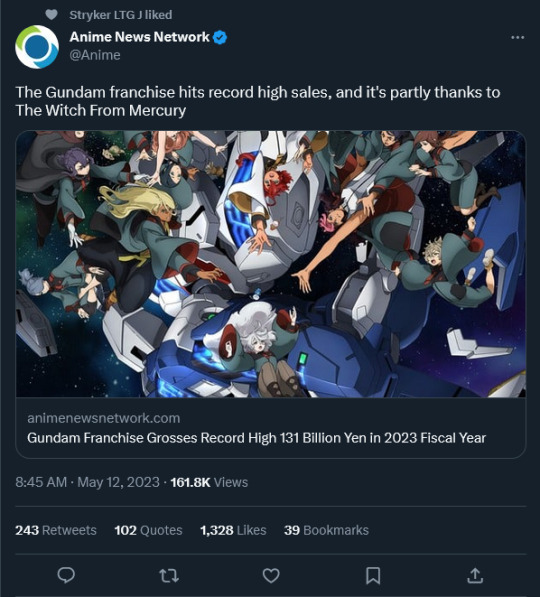#FY2023
Text
120 days left in the fiscal year, and here's where we stand.
Subcommittee approval of four of the twelve appropriations bills (Agriculture, Homeland Security, Legislative Branch, Military Construction/Veterans)
Appropriations committee meetings are being held, though there was only one yesterday (Senate Appropriations Subcommittee on Defense held a hearing on funding for the National Guard and Reserves)
In theory, the spending caps agreed to as part of the debt ceiling negotiations (Fiscal Responsibility Act of 2023, H.R. 3746) will guide further drafting of the budget.
Even with four months remaining, since it is not an election year, expect few, if any, of the bills to be complete by Oct. 1 necessitating a continuing resolution/stopgap to avoid a shutdown.
#government shutdown?#u.s. congress#appropriations#spending bills#fy2023#government funding#negotiations#congress#FY2024#120 days left
2 notes
·
View notes
Text
FY2023: GTCO Posts N609.3 Billion Profit
Guaranty Trust Holding Company (GTCO) has released its Audited Consolidated and Separate Financial Statements for the year ended December 31, 2023, to the Nigerian Exchange Group (NGX) and London Stock Exchange (LSE).
The Group reported profit before tax of N609.3billion, representing an increase of 184.5% over N214.2 billion recorded in the corresponding year ended December 2023.
GTCO’s loan…

View On WordPress
#FY2023#GTCO#Guaranty Trust Holding Company (GTCO)#Nigerian Exchange Group (NGX)#Stock Exchange (LSE)
0 notes
Text
Abhay Bhutada Stays True To His Promise Of Maintaining NIM Above 10%: Key Highlights From The Q3 FY2024 Results
Poonawalla Fincorp Ltd is shining bright thanks to its MD, Abhay Bhutada. The latest results for the third quarter of the financial year 2023-2024 show a big 76.3 percent increase in the company's profit to Rs 265.14 crore. Anand Rathi's report agrees, saying the net profit jumped by 76 percent, reaching Rs 2,651 million, thanks to strong growth in the money they manage. This success makes Poonawalla Fincorp stand out as a top player in finance, thanks to smart leadership and planning.
Abhay had promised to keep the Net Interest Margin (NIM) above 10%, and he delivered big time. In Q3, the NIM was an impressive 11.02 percent. This means the company earned more money from interest on loans, showing they know how to handle finances well.

Also Read: What Is The Net Interest Margin?
A big reason for Poonawalla Fincorp's success is the interest income, which reached Rs 714.41 crore in the last quarter. That's a lot more than the Rs 460.48 crore they made a year ago and even higher than the Rs 690.07 crore from the quarter before. Managing money smartly and giving out loans strategically played a big role in this success.
Abhay Bhutada, Poonawalla Fincorp’s managing director, in a release, said "We continued to showcase exemplary growth in Q3FY24 with highest ever quarterly disbursement and profit and strong AUM growth while maintaining a superior asset quality." In simple terms, they lent out more money to rake in bigger profits and kept their finances strong.
Now, let's talk about assets. Poonawalla Fincorp did a great job in making sure their assets were of high quality. In the October-December quarter, the bad loans, known as Gross Non-Performing Assets (NPA), decreased by 36 basis points compared to a year ago. That's good news because it shows the company is careful about who they lend money to.
Also Read: Improving Net Interest Margin: Strategies for Financial Institutions
The Gross NPA was 1.33 percent in the last quarter, down from 1.69 percent a year ago. Similarly, the Net NPA, another measure of bad loans, went down to 0.70 percent from 0.89 percent a year ago. All this means Poonawalla Fincorp was great at managing risk and keeping its loans healthy.

Poonawalla Fincorp also did exceptionally well in lending money and managing what they already have. They handed out a whopping Rs 8,731 crore in the last quarter, which is a huge 159 percent increase from the previous year and a 12 percent jump from the last three months.
Their Assets Under Management (AUM), which is all the money they manage, grew to Rs 21,946 crore. That's a 58 percent increase from a year ago and a solid 9 percent jump from the last quarter.
Also Read: 6 Leaders At The Helm Of India's Top Financial Institutions
The Way Forward
Looking ahead, Poonawalla Fincorp plans to raise Rs 4,000 crore by issuing something called Non-Convertible Debentures. It's a smart move to fuel their growth in the coming financial year. This shows they have plans to keep growing and staying strong in the market. The good news is reflected in the stock market too. Poonawalla Fincorp's shares went up by 1.42 percent to Rs 490.40 each on January 18.
Poonawalla Fincorp's success in Q3 is not just about making more money; it's about an MD sticking to his word and leading the company to new heights. The fantastic financial results, smart risk management, and growth strategies make Poonawalla Fincorp a standout player in the financial world.
0 notes
Text
09.01.2023
Əynini qalın geyin çöldə tufan var🤙🏻
1 note
·
View note
Text
Advocates: Budget should make NJ affordable for all | NJ Business Beat
Advocates: Budget should make NJ affordable for all | NJ Business Beat
Advocates: Budget should make NJ affordable for all | NJ Business Beat

View On WordPress
#anti-poverty#budget#budget negotiations#business beat#commerce#coronavirus#covid-19#economy#Finance#fiscal year#fy2023#governor phil murphy#low income#money#New Jersey#new jersey news#New Jersey Spotlight#Newark#news 12 nj#nightly news#NJ#nj news#nj policy perspective#NJ Spotlight#NJ Spotlight News#njn pbs#Peter Chen#phil murphy#poverty#Trenton
0 notes
Text
ICRA projects 13% GDP growth in Q1FY23
ICRA projects 13% GDP growth in Q1FY23
India’s GDP growth is projected to spike to a four-quarter high 13 per cent in Q1 (April-June) FY2023 due to low base of Covid 2.0 and robust recovery in contact-intensive services, according to ICRA.
The Q1FY2023 GDP projection is a sharp jump from 4.1 per cent in Q4FY2022. Overall, ICRA expects GDP growth in Q1 FY2023 to trail the 16.2 per cent projected by the Monetary Policy Committee…
View On WordPress
0 notes
Text
the results are in! the most popular word occupying the minds of rabbits for the bulk of FY2023 was:
'explosion'
132 notes
·
View notes
Text
And they said it would fail....

Here's the proof you need that Mobile Suit Gundam: The Witch From Mercury was a good idea for revitalizing the Gundam franchise. Bandai Namco Holdings announced its 2023 Fiscal Year (FY) sales results on Wednesday, revealing record-breaking revenue for the Gundam IP. Group-wide sales amounted to 131.3 billion yen (about US$967 million) in FY2023, compared to 101.7 billion yen (about US$749 million) in the previous year.
In a March newsletter, Bandai Namco Holdings president Masaru Kawaguchi specifically highlighted The Witch From Mercury for acquiring new fans among young people and women. He also highlighted the Gundam Aerial gunpla models as strong sellers.
Bandai Namco Holdings publishes financial reports as far back as FY2006. These reports reveal that Gundam's sales have not always followed a linear curve. Sales briefly dropped in FY2009-FY2010, as well as FY2015 and in FY2017-2018. However, there has been remarkable growth since FY2020, which also coincides with the increase of Gunpla sales throughout the pandemic. Case in point: 60.5 billion yen (US$45 million) of Gundam's 131.3 billion yen in sales in FY2023 was through the toys and hobby business, up from 44.2 billion yen (US$33 million) in the last financial year.
Other major Bandai Namco IPs to see growth in the last financial year include the perennial favorite Dragon Ball at 144.5 billion yen (US$1 billion)—up from 127.6 billion (US$940 million). One Piece also climbed up to 86.3 billion yen (US$636 million) from 44.1 billion yen (US$32 million) last year, reflecting the success of One Piece Film Red.
Overall, the company's net sales were 111.3% compared to the previous financial year, and the sector also saw a 103.5% gross profit. The sector to see the biggest growth was "Amusement," referring to amusement parks, arcades, and other public entertainment facilities. This segment grew by 127% from the previous financial year, indicating its recovery from COVID-19 restrictions.
SOURCE

#mobile suit gundam#gundam#mobile suit gundam the witch from mercury#g-witch#gwitch#g witch#gundam the witch from mercury#gundam witch from mercury#yuri#yuri gundam#suletta mercury#miorine rembran#gundam news#bandai sunrise#gunpla#gundam plamo#gundam aerial#xvx 016rn gundam aerial rebuild#xvx 016 gundam aerial
269 notes
·
View notes
Note
I was looking over Amtrak's financial report from FY2022 and I happened to read that "The Company [Amtrak] evaluated if its ongoing operating losses raise substantial doubt about Amtrak’s ability to continue as a going concern in the foreseeable future, considered to be through the end of December 2023, and concluded that the Company's forecasted cash flows, including anticipated Federal and state funding and credit arrangements, are sufficient to cover Amtrak's operations for the next year. Without Federal Government funding, Amtrak will not be able to continue to operate in its current form and significant operating changes, restructuring, or bankruptcy may occur." I would assume that federal funding will continue, however the fact that Amtrak felt the need to include this in the most recent financial report whereas it is absent in previous reports is what concerns me, but I would love to hear your thoughts on the matter.
Other statistics I found:
In FY2023 Q2, only 6 of Amtrak's current lines broke even (see below)
Wolverine (Cost Recovery: 100%)
Downeaster (Cost Recovery: 101%)
Acela (Cost Recovery: 109%)
Washington-Richmond (Cost Recovery: 113%)
Auto Train (Cost Recovery: 118%)
Amtrak (and its subsidiaries) had a net loss of $1,827,688,000 in FY2021
Amtrak's largest asset was "Right-of-way and other properties" totaling $17,920,253,000
Amtrak's second largest asset was "Available-for-sale securities, including restricted securities" totaling $2,900,521,000
The least profitable line in FY2023 Q2 is the Illinois Zephyr/Carl Sandburg which only generated 18% of its operating cost
The second least profitable line in FY2023 Q2 was the Sunset Limited which only generated 20% of its operating cost
The line with the highest average ridership in FY2023 Q2 was the Auto Train with an average ridership of 399 passengers
The line with the second-highest average ridership in FY2023 Q2 was the Northeast Regional with an average ridership of 259 passengers
Sources:
Federal Railroad Administration. “FY23 Q2 Financial Metrics | FRA.” Railroads.dot.gov, U.S. Department of Transportation, 17 July 2023, railroads.dot.gov/elibrary/fy23-q2-financial-metrics. Accessed 16 Aug. 2023.
Amtrak. “National Railroad Passenger Corporation and Subsidiaries (Amtrak) Consolidated Financial Statements.” National Railroad Passenger Corporation, 30 Sept. 2022.
National Railroad Passenger Corporation. “Management’s Discussion and Analysis of Financial Condition and Results of Operations and Consolidated Financial Statements with Report of Independent Auditors.” National Railroad Passenger Corporation, 30 Sept. 2022.
Yeah the reason that's said is because Amtrak is always at risk of losing funding from the government, just this year Republicans tried to cut the amtrak budget by 70%, what that is saying is basically Amtrak isn't profitable and Federal Subsidies are still needed, so basically business as usual for Amtrak
66 notes
·
View notes
Link
Still awaiting President Biden’s signature, so here’s more about the bill from a different source.
#H.R. 2617#omnibus spending bill#Consolidated Appropriations Act#FY2023#federal government funding#four days left#$1.7 trillion#takeaways#GovExec#Government Shutdown?
3 notes
·
View notes
Text

EXCLUSIVE: Internal CBP data I obtained via FOIA request reveals 13 years of known gotaways data at the border, showing gotaways have *exploded* under the Biden admin compared to the Trump & Obama years.
This is the first time these numbers have ever been revealed.
FY2010 155,599
FY2011 86,226
FY2012 105,105
FY2013 171,663
FY2014 162,071
FY2015 101,495
FY2016 106,643
FY2017 104,294
FY2018 128,679
FY2019 151,466
FY2020 136,808
FY2021 387,398
FY2022 606,131
FY2023 670,674
For perspective, in the decade of FY 2010 through FY 2020 under both Obama & Trump, CBP recorded over 1.4 million known gotaways.
In the three years of FY 2021 through FY 2023, CBP recorded over 1.6 million known gotaways.
A reminder, @PressSec has previously claimed that Biden has “done more than anybody” to secure the border.
Known gotaways are illegal aliens seen or detected via cameras, sensors, footsign, etc, but are never apprehended.
9 notes
·
View notes
Text
40 notes
·
View notes
Text
Numbers are fun! But big numbers are really hard to understand, so let me help.
The FY2023 defense budget will exceed 773 billion USD, congress authorized 778 billion, but I'm lowballing with 773. That's 773,000,000,000. That's four Elon Musks. And this is where it gets fun.
Elon Musk's net worth, per Forbes, is 190 billion. That's 24.5% of the US DoD budget. And Musk is grotesquely wealthy, to be sure. He used to be more wealthy. I saw one figure put him at 320 billion before he dropped. But that's only 41.4%. Not even half.
The Forbes top 5 are currently worth 730 billion dollars combined. That's 94.4% of the US DoD budget for 2023. The US spends more in a year on the military than the combined net worth of the five richest bastards in the world.
23 notes
·
View notes
Text
Businesses want budget boost from state | NJ Business Beat
Businesses want budget boost from state | NJ Business Beat
Businesses want budget boost from state | NJ Business Beat

View On WordPress
#Anthony Russo#budget#budget negotiations#business beat#Commerce and Industry Association of New Jersey#coronavirus#covid-19#economy#Finance#fiscal year#fy2023#governor phil murphy#jobs#money#New Jersey#new jersey news#New Jersey Spotlight#Newark#news 12 nj#nightly news#NJ#nj news#NJ Spotlight#NJ Spotlight News#njn pbs#phil murphy#small business#training#Trenton#Trenton news
0 notes
Text
“The whistleblower, David Charles Grusch, 36, a decorated former combat officer in Afghanistan, is a veteran of the National Geospatial-Intelligence Agency (NGA) and the National Reconnaissance Office (NRO). He served as the reconnaissance office’s representative to the Unidentified Aerial Phenomena Task Force from 2019-2021. From late 2021 to July 2022, he was the NGA’s co-lead for UAP analysis and its representative to the task force.
The task force was established to investigate what were once called “unidentified flying objects,” or UFOs, and are now officially called “unidentified anomalous phenomena,” or UAP. The task force was led by the Department of the Navy under the Office of the Under Secretary of Defense for Intelligence and Security. It has since been reorganized and expanded into the All-Domain Anomaly Resolution Office to include investigations of objects operating underwater.
Grusch said the recoveries of partial fragments through and up to intact vehicles have been made for decades through the present day by the government, its allies, and defense contractors. Analysis has determined that the objects retrieved are “of exotic origin (non-human intelligence, whether extraterrestrial or unknown origin) based on the vehicle morphologies and material science testing and the possession of unique atomic arrangements and radiological signatures,” he said.
In filing his complaint, Grusch is represented by a lawyer who served as the original Intelligence Community Inspector General (ICIG).
(…)
Grusch’s disclosures, and those of non-public witnesses, under new protective provisions of the latest defense appropriations bill, signal a growing determination by some in the government to unravel a colossal enigma with national security implications that has bedeviled the military and tantalized the public going back to World War II and beyond. For many decades, the Air Force carried out a disinformation campaign to discredit reported sightings of unexplained objects. Now, with two public hearings and many classified briefings under its belt, Congress is pressing for answers.
(…)
Grusch prepared many briefs on unidentified aerial phenomena for Congress while in government and helped draft the language on UAP for the FY2023 National Defense Authorization Act, spearheaded by Senators Kirsten Gillibrand and Marco Rubio and signed into law by President Biden in December 2022. The provision states that any person with relevant UAP information can inform Congress without retaliation, regardless of any previous non-disclosure agreements.
(…)
He said he reported to Congress on the existence of a decades-long “publicly unknown Cold War for recovered and exploited physical material – a competition with near-peer adversaries over the years to identify UAP crashes/landings and retrieve the material for exploitation/reverse engineering to garner asymmetric national defense advantages.”
Beginning in 2022, Grusch provided Congress with hours of recorded classified information transcribed into hundreds of pages which included specific data about the materials recovery program. Congress has not been provided with any physical materials related to wreckage or other non-human objects.
(…)
“His assertion concerning the existence of a terrestrial arms race occurring sub-rosa over the past eighty years focused on reverse engineering technologies of unknown origin is fundamentally correct, as is the indisputable realization that at least some of these technologies of unknown origin derive from non-human intelligence,” said Karl Nell, the retired Army Colonel who worked with Grusch on the UAP Task Force.
(…)
Grusch said it was dangerous for this “eighty-year arms race” to continue in secrecy because it “further inhibits the world populace to be prepared for an unexpected, non-human intelligence contact scenario.”
“I hope this revelation serves as an ontological shock sociologically and provides a generally uniting issue for nations of the world to re-assess their priorities,” Grusch said.”
12 notes
·
View notes
Text
Welcome to shutdown watch 2023, where the House and Senate try to fund the federal government before the fiscal year 2024 before funding runs out at midnight on September 30th — or else, the government shuts down.
There are precious few legislative days left for both chambers this month, and none of the appropriations bills that need to be signed into law to stave out a shutdown have passed both chambers (in fact, just one, Military Construction and Veterans Affairs, has passed the House).
Right now, there are three scenarios in play:
Congress does nothing and shuts down the government at midnight on September 30th;
Congress passes one or more continuing resolutions (“CR”) that extend FY2023 funding at current levels until a certain date, moving a potential shutdown date further down the calendar, likely around the Christmas holiday.
Congress passes some or all of the 12 separate appropriations bills to fund the government through September 30, 2024, averting a shutdown for some or all of the federal government.
Here’s a look at more about each of the those possible scenarios:
No appropriations bills pass by Sept. 30
This one’s easy: if Congress doesn’t pass any funding bills, the government shuts down at midnight on Sept. 30 until they reach an agreement to fund all, or some, of the federal agencies that require Congress to appropriate funds.
Congress passes some, but not all, its appropriations bills
This path is relatively straight forward too — in this case, there is a partial government shutdown. The agencies that have been funded remain open and begin operating at their funding levels for the 2024 fiscal year. The agencies that haven’t been funded shut down.
One wrinkle here is that Congress can sidestep a shutdown by passing a continuing resolution that takes those unfunded agencies and extends their funding at 2023 fiscal year funding until full appropriations bills pass, or those continuing resolutions expire.
Congress passes a full continuing resolution for the federal government
This is an effort to kick the can down the road, with the government remaining open at previous funding levels while Congress works to pass the full year appropriations bills.
A “clean” CR: This would be a continuing resolution that continues FY2023 funding with zero changes. This is what Democrats (as well as many Republicans) would prefer and vote for. But some House conservatives say they won’t support a CR to extend FY2023 funding because they don’t agree with the current government funding levels. Just 9 House Republicans voted in favor of the last government funding bill in December 2022; 200 voted against.
A “conditional” CR: Some conservatives plan to use the leverage of a narrow Republican majority to demand policy changes to FY2023 funding levels in return for averting a government shutdown. This would likely alienate House and Senate Democrats, and potentially Senate Republicans as well. But if the House and Senate cannot agree on one version of a CR by midnight on September 30th, the government will shut down.
How long would a CR last?: This is still undecided; the House and Senate leadership have to get together to hammer out a deal. A CR can last for a few days, weeks or months. In previous years, congressional leaders have passed a CR in late September that expires just before the holidays to increase pressure on rank and file lawmakers to agree to a broader funding deal and avoid a pre-Christmas shutdown. McCarthy has publicly vowed not to do that.
It’s possible that Congress can’t agree to a permanent funding bill after one continuing resolution, forcing them to either agree to another one or prompting another government shutdown. Additionally, if all 12 appropriations bills are not signed into law by the end of 2023, there will be an automatic 1 percent cut to all discretionary spending (this does not include mandatory spending programs like Medicare, Medicaid and Social Security). The automatic cut was included in the agreement reached earlier this year to raise the debt ceiling.
And here are some other frequently asked questions that could arise during the funding debate:
What happens during a government shutdown?
Agencies are minimally staffed by employees who have been deemed “essential.” They work without being paid, while all “non-essential” employees will be sent home — though in previous shutdowns, Congress has passed legislation to give back pay to workers. Typically, law enforcement and prison employees, TSA employees, Border Patrol, Forest Service Firefighters, and Weather Service forecasters are deemed essential and work without pay. Most automatic government benefits like Social Security, Medicare, and Medicaid are paid out (they have a separate funding stream), though some benefits like WIC and school meals that are funded through the appropriations process will be cut off. The various litigation efforts targeting President Trump would continue. Congress historically has been unable to issue subpoenas during a shutdown, but that guidance is still being developed for this year.
What about funding for Ukraine and disaster relief?
In mid August, Biden sent a request to Congress for an additional $40 billion dollars in additional money for Ukraine ($24 billion), ongoing federal disaster relief ($12 billion), and border security ($4 billion). At the end of the month, following Hurricane Idalia, he said he was going to request another $4 billion. This kind of money is called a “supplemental appropriations request” and is usually passed outside of the normal funding process. Several more conservative House and Senate Republicans have expressed hesitation or opposition to continued Ukraine funding.
7 notes
·
View notes